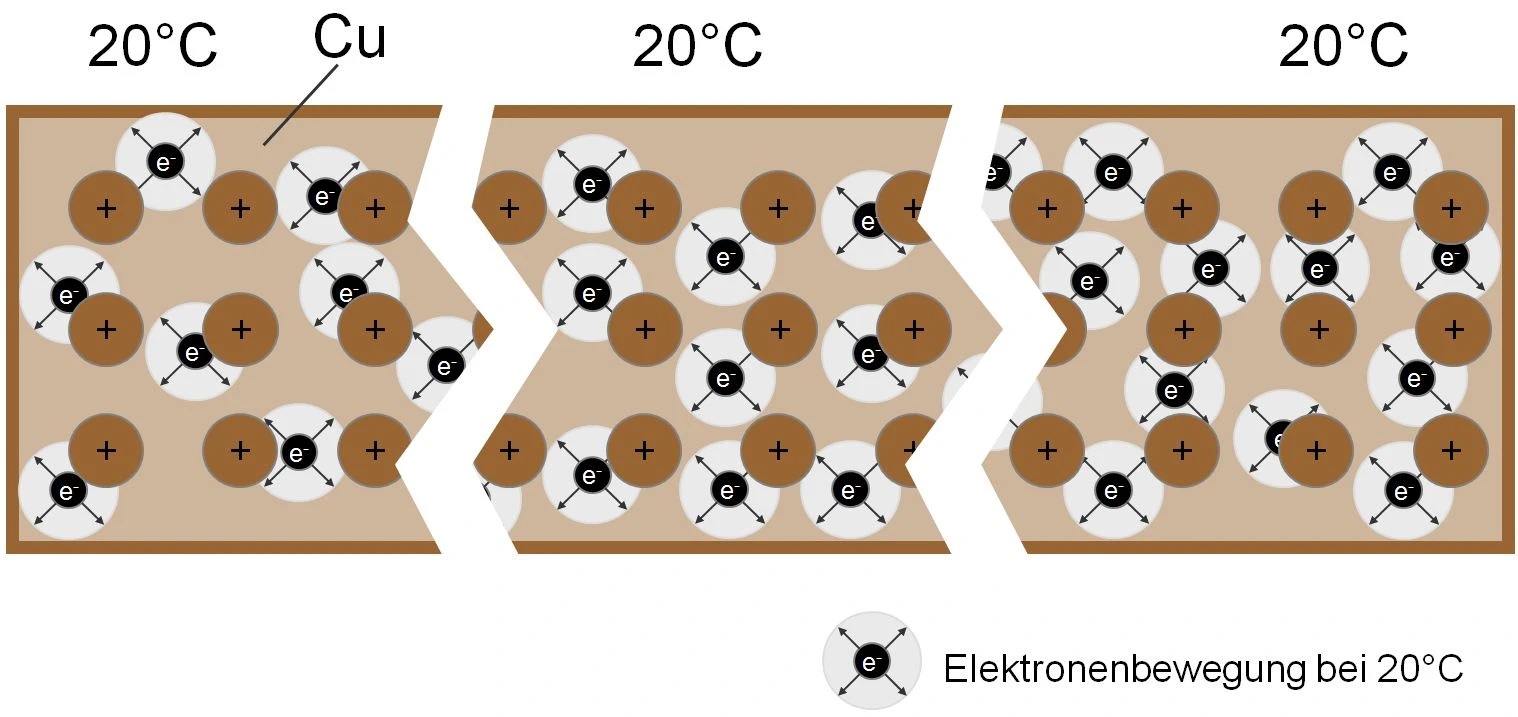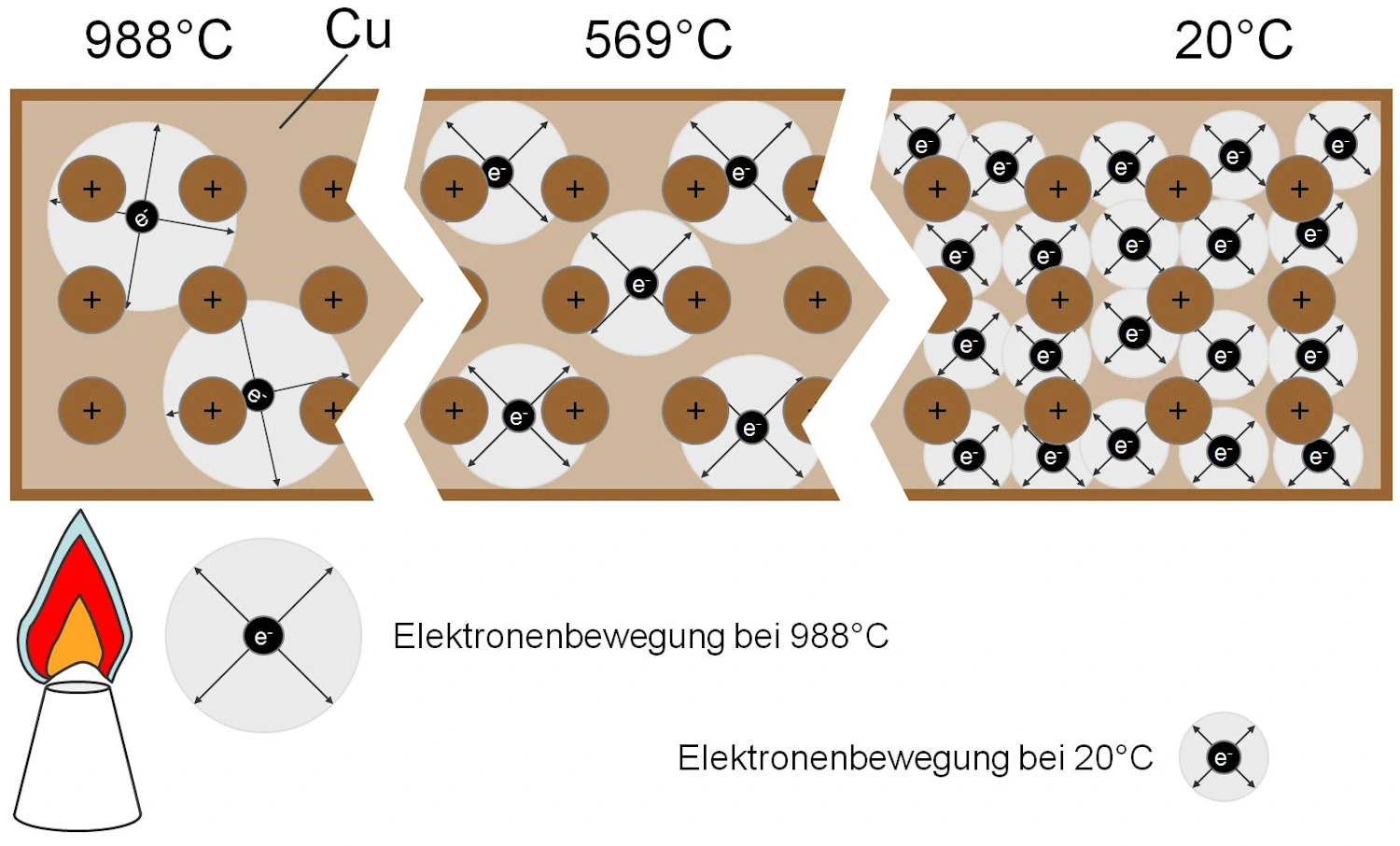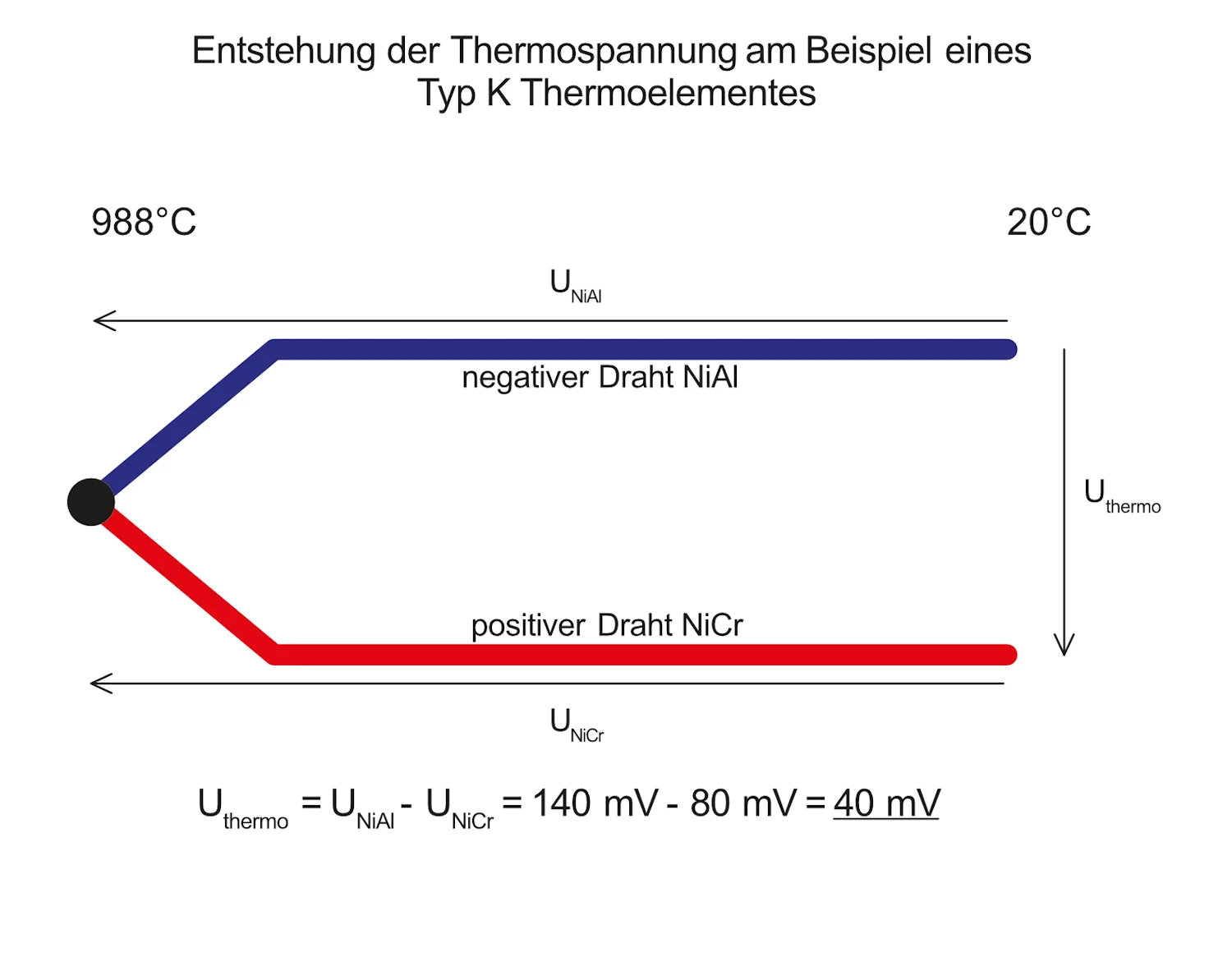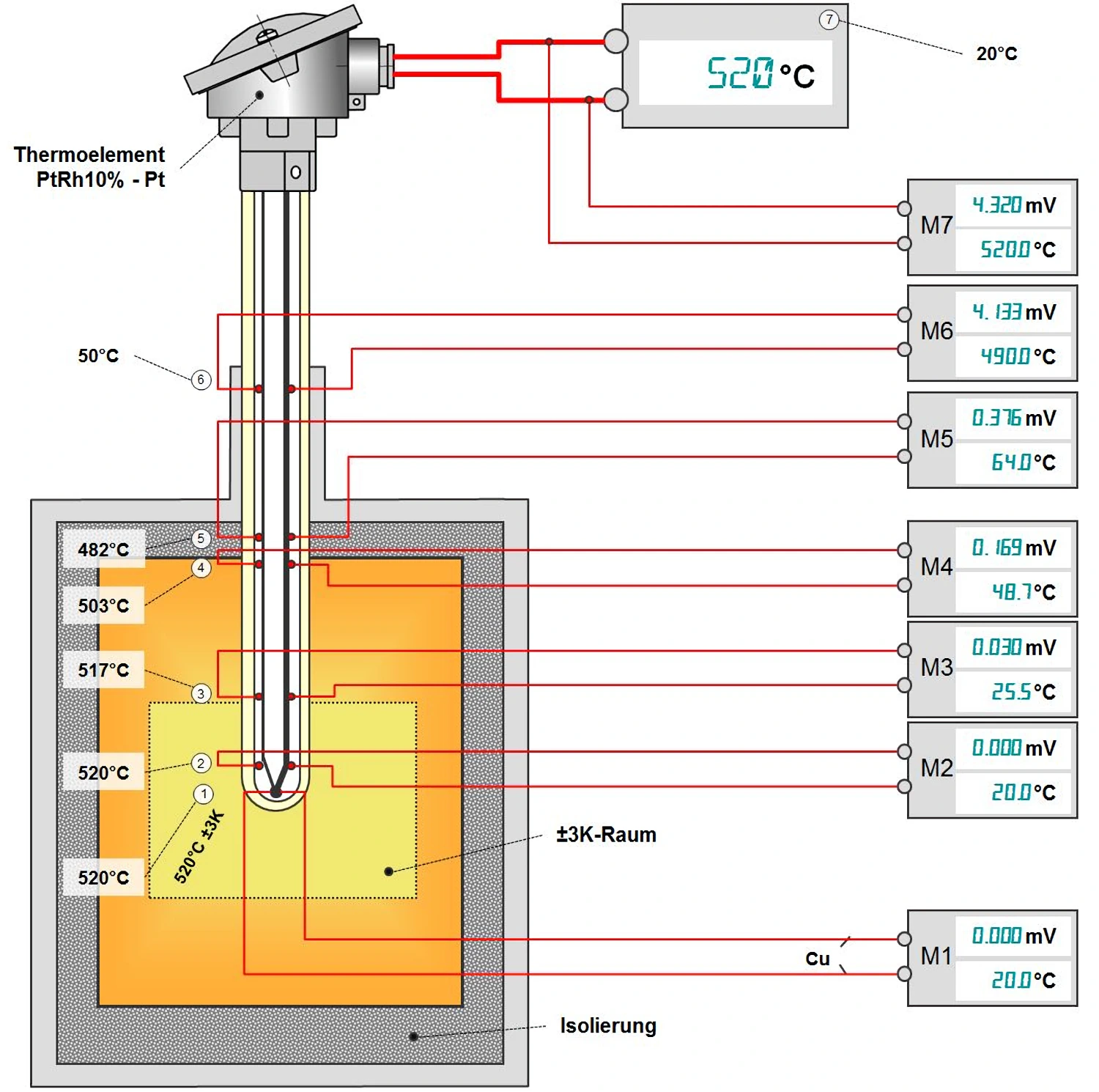The thermocouple consists of two wires made of different alloys. Each of these wires develops a certain voltage as soon as one end is warmer than the other. If you now connect both wires, the difference in the respective voltage in the wire can be measured. This difference is called thermoelectric voltage.
How exactly does thermoelectric voltage arise?
There are free electrons in every electrical conductor. They can move in the conductor and thus enable an electrical current to flow, for example.
In physical terms, these free electrons take up a certain space that increases with the temperature.
In a uniformly heated copper conductor, this space is approximately the same size. This is shown schematically in Figure 1.
Now heat up one end of the conductor.
This increases the movement space of the free electrons in this area. Due to the effect that like charges repel each other, the more heated electrons "push" the rest towards the cold end.
As a result, there is a shortage of electrons at the heated end and a surplus at the cold end. This creates a voltage.
Important to know: The level of the voltage is mainly influenced by the chemical composition of the wire and the temperature difference!
However, no signal can be generated with the single voltage of the wire. Consequently, a second wire is required. Both wires should be connected at the point with the highest temperature.
The voltage difference between the two wires serves as a signal and is defined as thermoelectric voltage.








